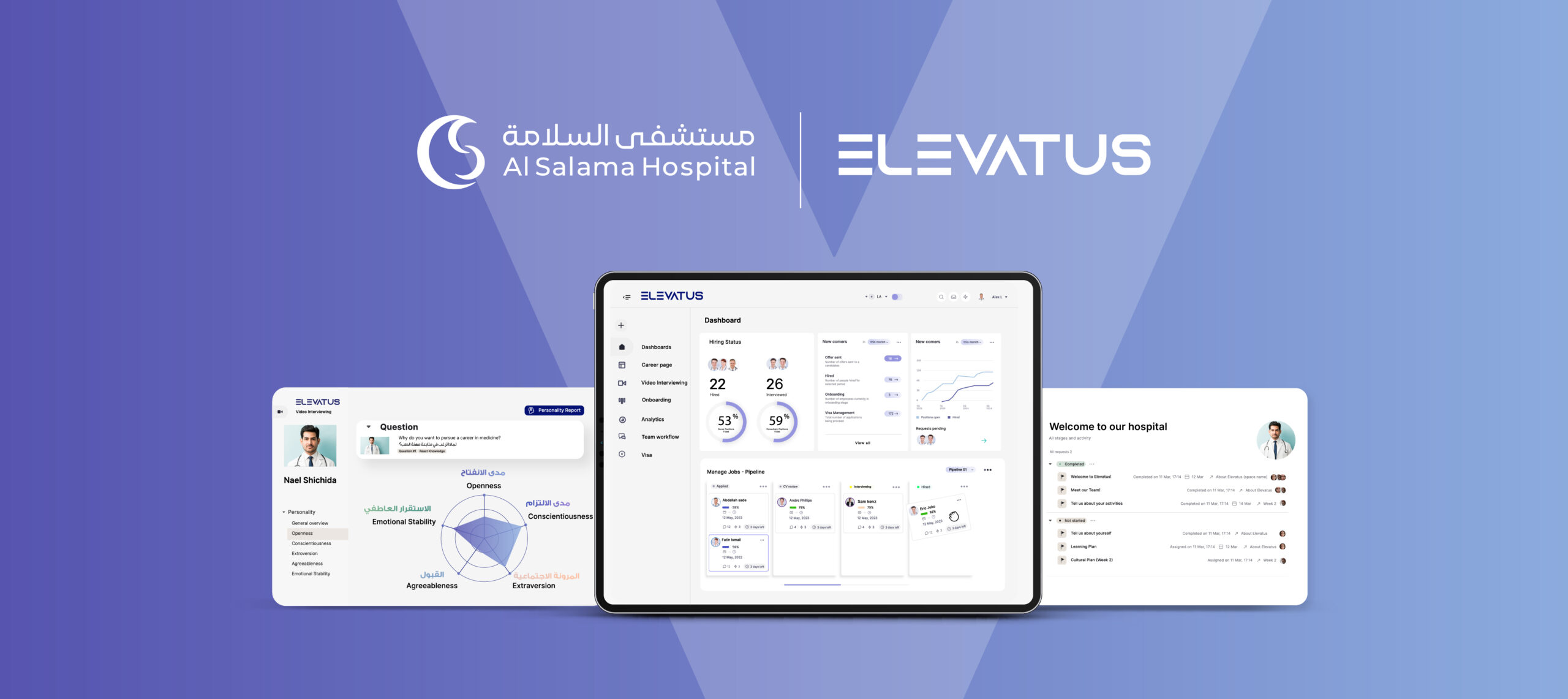
HR Resources
Unravelling the Enigma of Employee Attrition: An Empowering and Extensive Guide
July 24, 2023
Reem Al-Tamimi
Content Writer
Companies are like vibrant ecosystems, with employees joining and departing like the changing seasons. And just like in nature, some departures are natural and expected, such as employees moving on to new opportunities or entering a well-deserved retirement. But when employee attrition becomes chaotic, it can seriously affect your company’s success and culture.
For example, if there’s too much attrition among minority employees, it can hurt diversity in your organization. And when senior leaders leave, it creates a big gap in leadership. So, do you know where your company stands when it comes to employee attrition?
In this blog, we’ll explore different types of employee attrition, explain how it’s different from turnover, and give you a complete understanding of how it affects HR. But before we dive in, let’s start by clarifying some important definitions.
Table of Contents
What Is Employee Attrition?
Employee attrition refers to the gradual decrease in your workforce over time due to employees leaving the company. It happens when employees decide to resign for personal or professional reasons that are often beyond the employer’s control. Let’s imagine a scenario: You open a new office and require all kinds of employees to work there. But some employees can’t relocate, so they choose to leave. This is a common example of employee attrition.
Attrition can occur for various reasons, such as limited opportunities for growth, a hostile work environment, or losing faith in the company’s market value. Weak leadership also contributes to employees leaving. Every company values employee retention, but when more employees leave than join, attrition becomes a problem. It becomes even more challenging when there are no immediate replacements available.
Plus, it’s important to remember that attrition is inevitable. Employees will eventually leave for personal or professional purposes. No company has complete control over attrition. However, a high attrition rate directly affects the success of your organization. Therefore, understanding and effectively managing employee attrition is crucial for maintaining a thriving and sustainable workforce. So, let’s dive into the world of attrition and discover how to tackle this challenge head-on!
Employee Attrition vs. Turnover: Understanding the Key Differences


Employee attrition and turnover may sound similar, but they have distinct differences. Let’s break it down. Attrition is when your workforce gradually shrinks over time due to retirement, planned resignations, or structural changes. When employees leave due to attrition, their positions aren’t immediately filled. On the other hand, turnover is more immediate. It’s about employees leaving and needing to be replaced quickly through rehiring.
The average attrition rate can vary depending on factors like industry, region, and company size. According to a study by Mercer, the global average voluntary attrition rate was around 11.1% in 2021, a 1.2% increase from 9.9% in 2020. However, specific industries can have higher or lower rates. For example, the technology sector often sees attrition rates of around 13.2%, while the financial services sector tends to have lower rates, around 8.3%.
However, It’s important to note that these rates can change based on various factors. To understand your organization’s attrition, track your specific rates and compare them to industry benchmarks. This way, you can gain insights into your workforce dynamics and identify areas to improve talent retention strategies. So, keep an eye on attrition and turnover, and take proactive steps to maintain a thriving and engaged workforce.
Exploring Different Types of Employee Attrition
In the world of employee attrition, knowledge is power. Understanding the different types of employee attrition is essential for effective workforce management. Contrary to popular belief, not all forms of attrition are negative. However, being able to distinguish between them allows you to assess their impact and take proactive measures to minimize any potential long-term repercussions.
Let’s delve into the main types of employee attrition, empowering you with the insights needed to navigate this complex landscape and cultivate a resilient and engaged team.
Involuntary attrition (Unregretted Attrition Rate)
In the world of employee attrition, there’s a type called involuntary attrition, also known as unregretted attrition. It’s when the company takes the lead in ending the employee’s journey rather than the employee deciding to leave. This can happen for different reasons. For example, if an employee displays misconduct at work or due to structural changes like mergers and acquisitions.
Unregretted attrition is when the company willingly lets go of an employee or when the employee leaves and their departure doesn’t have a negative impact. This often occurs during layoffs, company restructuring, termination, or the introduction of automation. The good news is that unregretted attrition is usually a calculated move, meaning it doesn’t harm the business too much.
While involuntary attrition may not sound great, it allows companies to adapt to changes and optimize their workforce. By managing unregretted attrition strategically, businesses can navigate transitions smoothly. Understanding this type of attrition helps companies make informed decisions and maintain a harmonious and resilient workforce.
Voluntary attrition (Regrettable Attrition Rate)
Regrettable attrition, also known as voluntary attrition, is a big deal for companies. It’s when employees decide to quit their jobs, leaving the company with a loss of valuable talent. This type of attrition is the most harmful because it affects the productivity and morale of the remaining team members.
There are many reasons behind regrettable attrition, such as job dissatisfaction, burnout, better job offers elsewhere, limited career growth, poor workplace culture, and lack of employee benefits. These factors are in the company’s control and need to be addressed proactively.
When high-value employees, like marketing experts, start leaving different business units, it’s a clear sign that something’s not right. To prevent regrettable attrition, companies should focus on creating a positive work environment, promoting employee engagement, and offering attractive benefits and growth opportunities.
By taking action to retain valuable employees, companies can maintain productivity and retain critical skills. Recognizing the causes and signals of regrettable attrition is the first step in building a supportive culture that encourages talent retention and long-term success.


Retirement attrition
Retirement attrition, one type of employee attrition to keep an eye on, occurs when employees retire from your company. While retirement attrition is generally not a big concern, it’s important not to dismiss its significance. Sometimes, senior professionals may choose to retire early or explore independent consulting opportunities for reasons other than age.
Typically, the number of employees retiring is smaller compared to other forms of employee departures. Retirement is often expected and planned well in advance, giving companies time to prepare. However, there can be a significant impact if a large group of employees all reach retirement age around the same time. Although this scenario is rare, it’s something to consider if your staff members are of similar age.
To manage retirement attrition, it’s crucial to have strategies in place for knowledge transfer and seamless transitions. Succession planning, mentorship programs, and initiatives for sharing knowledge become essential to prevent any gaps in expertise caused by retiring employees. By addressing retirement attrition proactively, companies can ensure continuity, preserve valuable knowledge, and adapt smoothly to changes in their workforce as employees embark on their well-deserved retirement journeys.
Other types of attrition
Employee attrition encompasses more than just the widely recognized forms. In addition to the previously mentioned types, there are other noteworthy categories that can impact your workforce dynamics. Let’s explore them together.
- Internal Attrition: This happens when employees leave one department to join another within the same company. It can be positive as it directs talent to more profitable areas and improves employee-job fit. However, if a department experiences a high attrition rate, it’s time to investigate. Are there job-related issues or inadequate management skills? HR must ask these questions to find solutions.
- Demographic-Specific Attrition: Companies striving for equal opportunities face this challenge. It occurs when employees from specific groups, like women, ethnic minorities, individuals with disabilities, veterans, or older professionals, leave in large numbers. To address this, conducting employee surveys is vital. They help uncover the root causes and enable the preservation of a positive workplace culture.
By understanding and addressing these types of attrition, you can proactively manage your workforce, foster diversity and inclusivity, and mitigate the negative impacts. Focus on retention strategies and create an environment where all employees can thrive.
Differentiating Healthy and Unhealthy Departures from Your Workforce
Differentiating between healthy and unhealthy attrition is a game-changer for managing your workforce effectively. It empowers organizations to pinpoint areas for improvement, retain valuable talent, and proactively address negative attrition factors.
By recognizing the impact of attrition on organizational health, companies can create a thriving work environment and cultivate a strong, resilient workforce. So, don’t underestimate the importance of distinguishing between the two. It’s the key to unlocking a workforce that thrives and propels your organization toward success.
Understanding healthy attrition
Attrition is often perceived as a negative aspect of workforce management, but here’s a twist: attrition can sometimes be healthy. Certain departures from your organization can signify positive transitions and personal growth.
One such form of healthy attrition is retirement. After dedicating years of service, employees reach a point where they choose to step back and enjoy the fruits of their labor. Retirement presents an opportunity for organizations to honor their contributions, celebrate achievements, and ensure a smooth transition, passing on valuable knowledge and maintaining continuity.
Career changes also contribute to healthy attrition. Sometimes, employees discover new passions or better opportunities that align with their goals. Encouraging individuals to pursue these paths fosters a positive work environment and demonstrates support for personal growth. Furthermore, their departures create openings that can be filled with fresh talent, injecting new perspectives and skills into the organization.
By recognizing and embracing healthy attrition, organizations adapt and evolve. It shows a commitment to individual growth, empowering employees to explore new horizons while appreciating their past contributions. With effective succession planning, organizations can create a culture that supports employees throughout their career journeys, fostering fulfillment and continuous growth.
So, let’s shift our perspective on attrition and celebrate the healthy transitions and growth it can bring. It’s a testament to a dynamic and thriving workforce, propelling both individuals and organizations toward a brighter future.


Unveiling unhealthy attrition
There are many factors that contribute to unhealthy attrition, with dissatisfaction and burnout being significant ones. It’s essential to understand these elements as they can have a profound impact on employees and their decision to leave an organization.
Dissatisfaction is a common cause of unhealthy attrition. It arises when employees feel unfulfilled or unsatisfied with their roles, work environment, or organizational culture. It can stem from limited growth opportunities, lack of recognition, poor communication, or a mismatch of expectations. Unaddressed dissatisfaction leads to disengagement, decreased productivity, and employees seeking new opportunities elsewhere.
Burnout, another form of unhealthy attrition, happens when employees experience chronic exhaustion, overwhelming stress, and a sense of diminished accomplishment. It often results from excessive workloads, high pressure, or a lack of work-life balance. Burnout impacts well-being, performance, and motivation. If left unchecked, it can lead to increased absenteeism, reduced job satisfaction, and, ultimately, employees deciding to leave.
To combat unhealthy attrition, organizations must create a supportive environment that prioritizes employee well-being, growth opportunities, and open communication. Strategies to prevent burnout, promote work-life balance, offer professional development, and seek employee feedback are crucial.
By understanding and addressing dissatisfaction and burnout, organizations can reduce unhealthy attrition rates, retain valuable talent, and foster a positive and productive workplace culture. Prioritizing employee satisfaction and well-being lays the groundwork for a resilient workforce and long-term success.
Finding harmony: evaluating the balance in your organization
Striking the perfect balance between healthy and unhealthy attrition is crucial for organizational success. Fortunately, cutting-edge recruitment software like EVA-REC can play a vital role in achieving this sweet spot. Here’s how it can help:
- Data-driven insights: EVA-REC recruitment software provides valuable data and analytics that help you understand attrition patterns and trends. By analyzing this data, you can identify potential areas of concern and make informed decisions to foster healthy attrition.
- Talent acquisition strategies: futuristic recruitment software like EVA-REC enables you to attract and hire candidates who align with your organization’s values, culture, and growth opportunities. By focusing on finding the right fit from the start, you can reduce the risk of unhealthy attrition due to poor job-person fit.
- Succession planning: With recruitment software, you can proactively identify high-potential employees within your organization and develop succession plans. For example, with EVA-REC, you can proactively identify high-potential employees within your organization and swiftly develop tailored succession plans. In seconds, the AI-matching feature matches your candidates with your specific requirements and job descriptions. This ensures a smooth transition when employees retire or leave, minimizing the impact of unhealthy attrition on critical roles.
- Candidate experience: A positive candidate experience, facilitated by recruitment software, enhances your employer’s brand and reputation. When candidates have a seamless and engaging experience throughout the recruitment process, they are more likely to feel valued and committed to the organization, reducing the likelihood of early attrition.
- Performance tracking: a powerful recruitment software like EVA-REC offers performance tracking features, allowing you to monitor the success and retention rates of hires. By evaluating how well new employees perform and thrive within the organization, you can fine-tune your recruitment strategies to optimize healthy attrition outcomes.
Incorporating recruitment software into your talent management strategy empowers you to make data-driven decisions, attract the right talent, and proactively manage attrition. By leveraging these tools, you can strike the perfect balance between healthy and unhealthy attrition, fostering a resilient and engaged workforce.


The Impact of Employee Attrition: Why it Matters for Your Organization’s Success
Employee attrition creates a ripple effect that can significantly impact your organization’s success. When valuable team members leave, it disrupts workflows, diminishes productivity, and increases recruitment costs.
To ensure sustained growth and achievement, proactively managing attrition is vital. By understanding its impact and taking proactive measures to retain and engage employees, you can foster a supportive work environment, you can mitigate the negative consequences of attrition, and cultivate a resilient workforce.
Reducing company productivity and the bottom line
Attrition takes a toll on company productivity and the bottom line, mainly due to the loss of valuable tribal knowledge. Tribal knowledge refers to unique insights held by key individuals in the organization. When they leave, a knowledge gap emerges, and new or less-experienced employees must take time to learn and adjust, resulting in reduced productivity.
For example, in the manufacturing industry, tribal knowledge may include specialized techniques for operating certain machines that new hires are unaware of. Even some seasoned employees might lack this intricate know-how. That’s why transferring knowledge before attrition is crucial.
Recognizing the impact of attrition underscores the importance of knowledge transfer and retention strategies. By proactively sharing tribal knowledge, organizations can minimize disruptions, foster continuous learning, and preserve valuable expertise. These efforts contribute to a strong bottom line and long-term success.
Disrupting team morale and engagement
Employee attrition sends ripples through your team, affecting morale and engagement. When valued members depart, it creates uncertainty and disrupts the team dynamic. Workloads increase, motivation dwindles, and trust may erode. Job security concerns arise, impacting engagement levels.
To counteract these effects, prioritize open communication and support. Give team members a voice, address attrition’s impact, and recognize their contributions. Implement effective retention strategies, foster a positive work environment, and encourage growth. By proactively managing attrition, you can cultivate a motivated and engaged team that thrives amidst change.
Higher cost of hiring and training new employees
Employee attrition has a significant financial impact on organizations, especially when it comes to hiring and training new employees. When employees leave, the company incurs expenses to onboard and train replacements, adding to the overall costs. Additionally, the recruitment process itself comes with financial burdens.
Reducing employee attrition rates becomes essential to minimize hiring expenses and boost profitability. By retaining valuable employees, organizations can save on recruitment costs, such as advertising and screening. Moreover, investing in employee retention strategies fosters a more engaged workforce, leading to increased productivity and financial success.
The efforts to reduce attrition not only result in cost savings but also create stability within the organization. By cultivating a positive work environment, offering growth opportunities, and recognizing employee contributions, companies can foster loyalty and reduce the need for frequent hiring and training.
Overall, understanding the impact of attrition on hiring and training costs highlights the importance of effective retention strategies. By prioritizing employee satisfaction and engagement, organizations can optimize financial resources and drive long-term profitability. So, let’s invest in retaining talent and minimize the costly consequences of attrition.
Identifying Signs of Employee Attrition: Stay Vigilant to Maintain a Healthy Workforce


Employee attrition can have significant consequences for your company. However, by detecting signs of attrition early on, you can take proactive steps to retain valuable employees. Addressing these indicators not only cultivates a positive and engaging workplace culture but also boosts employee retention, driving organizational success.
Stay vigilant and be on the lookout for attrition signs. By staying one step ahead, you can effectively address potential risks and nurture a motivated and satisfied workforce dedicated to your company’s growth.
Less productive teams
When employees show a decline in productivity and engagement, it can be an early warning sign of potential attrition. These individuals, who were previously motivated and proactive, may become disengaged, leading to lower-quality work, missed deadlines, and reduced overall productivity. They might display less interest in their tasks or lack enthusiasm. Recognizing this noticeable drop is crucial, prompting a deeper exploration of the underlying causes that contribute to the decline.
Taking prompt action to address these issues is essential for retaining valuable employees and maintaining a thriving work environment. By delving into the root causes and implementing appropriate measures, you can rekindle their motivation and reignite their enthusiasm, reducing the risk of attrition and fostering a productive and engaged workforce.
Increased absenteeism
The time when absenteeism suddenly spikes or a pattern of unplanned absences emerges, it might signal underlying employee attrition. Absenteeism can reveal a lack of motivation, disengagement, or personal challenges that could indicate an employee’s contemplation of leaving the organization.
Keeping a close eye on absences and identifying patterns or trends can help spot potential attrition risks. Engage in open and supportive conversations with employees to grasp their concerns and extend the necessary support. By proactively addressing absenteeism and understanding its root causes, you can create an environment that encourages employee retention and satisfaction. Remember, open communication is key to gaining insights and finding solutions to prevent attrition and foster a harmonious workplace.
Changes in employee behavior or attitude
If you notice significant changes in an employee’s behavior or attitude, it’s essential to pay attention as it could be a warning sign for attrition. They might become withdrawn, display a negative attitude, or show signs of frustration and apathy toward their work. These behavioral shifts often indicate underlying dissatisfaction or unhappiness. Stay alert to these changes and take a proactive approach by engaging with employees to uncover the root causes and explore potential solutions.
By actively addressing these signs, you can address concerns early on and work towards finding resolutions. Through open communication and support, you can help employees regain their motivation and satisfaction, ultimately reducing the risk of attrition. Remember, staying attentive and taking prompt action can make a significant difference in retaining valued employees and creating a positive work environment.
Frequent complaints or negative feedback
When employees consistently express dissatisfaction, voice concerns, or provide negative feedback about their work environment, job tasks, or organizational practices, it’s crucial to take these signals seriously. An uptick in complaints or negative feedback can indicate attrition risk. Actively listening to employee feedback, addressing their concerns, and seeking opportunities for improvement are vital steps to prevent employee attrition.
By creating an open and supportive environment, you encourage employees to freely share their thoughts and concerns. This fosters a culture of trust where issues can be addressed promptly. Taking employee feedback seriously not only helps address specific concerns but also demonstrates that their voices are heard and valued.
Measuring Employee Attrition for Organizational Insight


Employee attrition is a puzzle that organizations strive to solve. To unlock the secrets behind attrition and its impact, measurement becomes the key. By delving into the data, deciphering trends, and gaining actionable insights, you can navigate the labyrinth of employee attrition, make informed decisions, and pave the way for a resilient and successful workforce.
How to calculate the employee attrition rate?
Measuring the employee attrition rate of your employees is a straightforward process that provides valuable insights into your workforce dynamics. To calculate it, follow these steps:
- Determine the time period: Decide on the duration for measuring employee attrition, such as monthly, quarterly, or annually.
- Find the average number of employees: Determine the average number of employees during the chosen period. This can be calculated by taking the total number of employees at the beginning and end of the period and averaging them.
- Count the number of departures: Identify the number of employees who have left positions during the specified time period and have not been replaced.
- Calculate the attrition rate: Divide the number of departed employees by the average number of employees. Multiply the result by 100 to obtain the attrition rate percentage.
For instance, let’s say your organization has an average of 1000 employees, and during the previous month, 30 employees left their positions without being replaced:
Employee Attrition Rate = (30 / 1000) * 100 = 3%
Calculating the employee attrition rate allows you to quantify the impact of employee departures on your workforce. By regularly monitoring and analyzing these numbers, you can gain insights into employee attrition trends and take proactive steps to improve retention, foster a stable work environment, and drive organizational success.
Employee attrition analysis for trends and patterns
Retention strategies hold the key to preserving your top talent, but they need accurate insights to unlock their full potential. By delving into attrition data, you can uncover the secrets that drive employee departures and fuel retention challenges. It’s like solving a complex puzzle. Therefore, understanding the unique trends and patterns within your organization is essential to develop targeted strategies that address the underlying causes of attrition.
For example, according to the 2019 Retention Report, Google revealed eye-opening attrition rates among employees from diverse racial backgrounds. This sheds light on the need for improved equity and inclusivity. Similarly, anecdotal evidence suggests that Uber faced above-average attrition rates, indicating potential issues with workplace culture and employer reputation.
These trends highlight the prevalence of attrition across industries. Employers must take notice and follow Google’s lead in addressing root causes of attrition within their workforce.
To build a loyal and engaged team, it’s crucial to analyze your attrition data and understand the specific factors that drive turnover. This knowledge empowers you to implement customized strategies to retain talent and enhance employee satisfaction. Embrace the power of data-driven insights to create a resilient and successful workforce.
Understanding attrition benchmarks in your industry
Knowing the employee attrition benchmarks in your industry is key to gaining valuable insights into employee turnover. By comparing your organization’s attrition rate to industry standards, you can assess your performance and identify areas for improvement. Understanding whether your attrition rate is higher or lower than average helps you gauge the effectiveness of your retention strategies. It also enables you to identify factors that contribute to attrition within your industry, allowing you to address them proactively. By leveraging attrition benchmarks, you can set realistic goals, refine your retention efforts, and create a more stable workforce.


Mastering Attrition for a Flourishing Workforce
In the depths of the business realm, the dreaded attrition lurks, ready to unleash chaos upon productivity. As employees bid farewell, this Monster leaves a trail of disrupted workflows, knowledge gaps, and strained resources.
However, by boldly facing this formidable foe, you can safeguard your organization’s vitality. Tap into the power of attrition awareness to identify the signs, unravel the causes, and wield retention strategies like shields of strength. With each victory in retaining valuable talent, you bolster productivity, reduce costs, and cultivate a workforce that radiates enthusiasm.
Now, are you on the quest for recruitment software that can help you identify top talent, streamline onboarding, and avoid employee attrition? Look no further!
EVA-REC is a top-rated recruiting software that help companies worldwide build skilful workforces and hire top talent at scale. Allowing them to find and hire the people they can depend on. EVA-REC’s world-class features ramp up team collaboration, automate the hiring process, streamline communication, eliminate admin tasks, create a memorable hiring experience, and help you make the right hires every time. Recruit top talent faster, fairer, and more efficiently with EVA-REC today! Request a free demo now!
Turn top talent to employees fast
Hire, assess, onboard and manage top talent for every job. See how Elevatus streamlines everything; from acquire to new hire.
Request a demoAuthor
Reem Al-Tamimi
Don't miss a thing!
Stay one step ahead. Subscribe and get the latest updates, news, and insights from Elevatus straight to your inbox.






